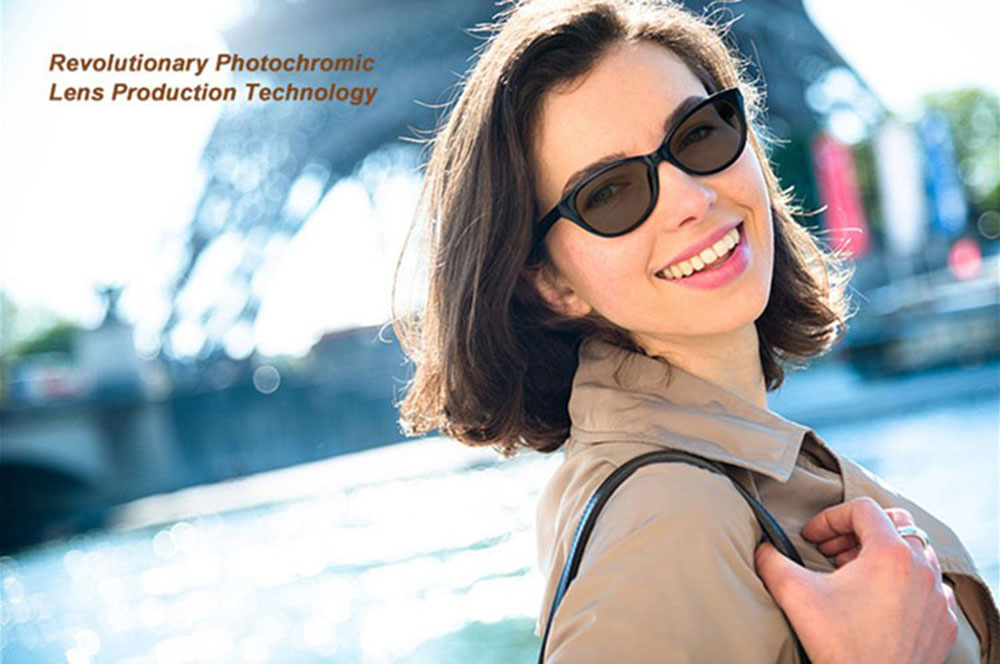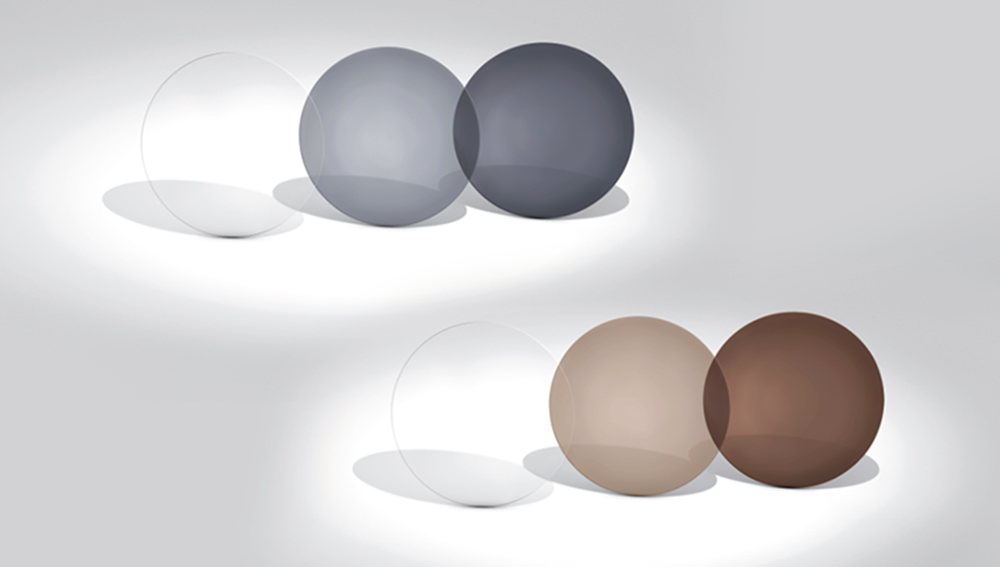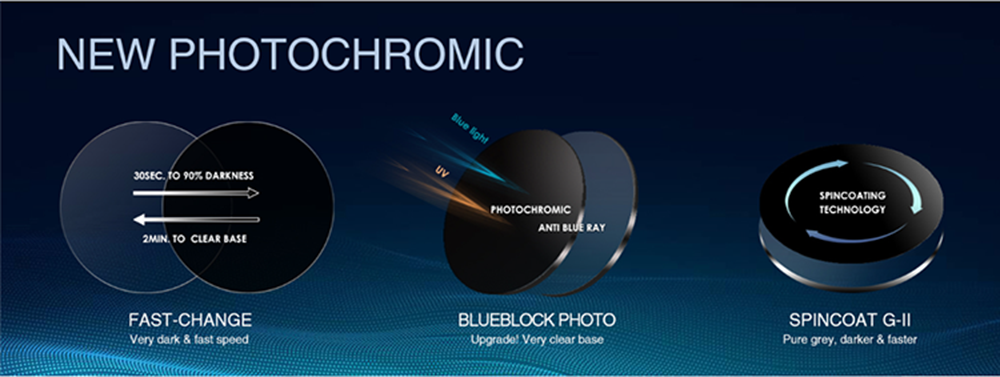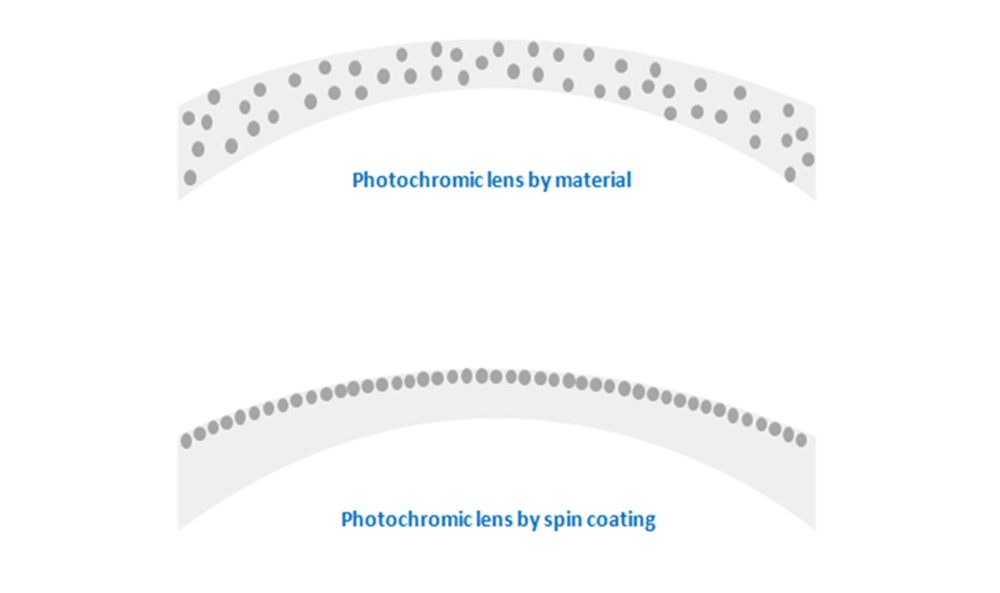
Photochromic lens, also known as light reaction lens, is made according to the theory of reversible reaction of light and color interchange. Photochromic lens can quickly darken under sunlight or ultraviolet light. It can block strong light and absorb ultraviolet light, as well as absorbing visible light neutrally. Back in the dark, it can quickly restore the clear and transparent state, ensuring the light transmittance of the lens. Therefore, photochromic lenses are suitable for indoor and outdoor use at the same time to prevent damage to the eyes from sunlight, ultraviolet light, and glare.
Generally, the main colors of photochromic lenses are gray and brown.
Photochromic Gray:
It can absorb infrared light and 98% of ultraviolet light. When looking at objects through gray lenses, the color of the objects will not be changed, but the color will become darker, and the light intensity will be effectively reduced.
Photochromic Brown:
It can absorb 100% of ultraviolet rays, filter blue light, improve visual contrast and clarity, and visual brightness. It is suitable for wearing in severe air pollution or foggy conditions, and is a good choice for drivers.

How to judge photochromic lenses are good or bad?
1. The color changing speed: Good color-changing lenses have fast color changing speed, no matter from clear to dark, or from dark to clear.
2. The depth of color: the stronger the ultraviolet rays of a good photochromic lens, the darker the color will be. Ordinary photochromic lenses may be unable to reach a deep color..
3. A pair of photochromic lenses with basically the same base color and synchronized color changing speed and depth.
4. Good color changing endurability and longevity.

Types of photochromic lens:
In term of production technique, there are basically two types of photochromic lenses: By material, and by coating(spin coating/dipping coating).
Nowadays, the popular photochromic lens by material is mainly 1.56 index, while the photochromic lenses made by coating have more choices, such as 1.499/1.56/1.61/1.67/1.74/PC.
The blue cut function have been integrated in the photochromic lenses to provide more protection for the eyes.

Precautions for purchasing photochromic lenses:
1. If the diopter difference between the two eyes is more than 100 degrees, it is recommended to choose photochromic lenses made by coating, which will not cause different shades of lens discoloration due to the different thickness of the two lenses.
2. If the photochromic lenses worn for more than one year, and either one is damaged and needs to be replaced, it is recommended to replace both of them together, so that the discoloration effect of the two lenses will not be different due to the different use time of the two lenses.
3. If you have high intraocular pressure or glaucoma, don't wear photochromic lenses or sunglasses.
A Guide to Wearing Color Changing Films in Winter:
How long do photochromic lenses usually last?
In the case of good maintenance, the performance of photochromic lenses can be maintained for 2 to 3 years. The other ordinary lenses will also oxidize and turn yellow after daily use.
Will it change color after a period of time?
If the lens is worn for a period of time, if the film layer falls off or the lens is worn, it will affect the discoloration performance of the photochromic film, and the discoloration may be uneven; if the discoloration is deep for a long time, the discoloration effect will also be affected, and there may be failure discoloration or being in a dark state for a long time. We call such photochromic lens has "died".

Will it change color on cloudy days?
There are also ultraviolet rays in cloudy days, which will activate the discoloration factor in the lens to carry out activities. The stronger the ultraviolet rays, the deeper the discoloration; the higher the temperature, the lighter the discoloration. The temperature is low in winter, the lens fades slowly and the color is deep.

Universe Optical have a complete range of photochromic lenses, for the details please go to:


